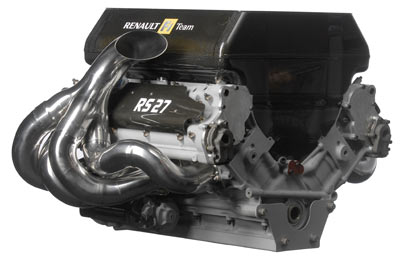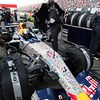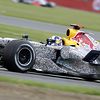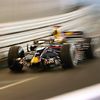Red Bull RB3 Renault
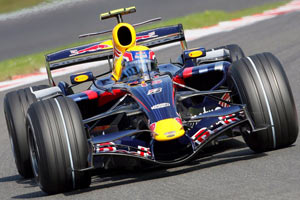
Active: 2007
Team: Red Bull Racing
Designer: Adrian Newey (CTO), Mark Smith (TD), Ben Agathangelou (HA)
Drivers: David Coulthard (14), Mark Webber (15)
The RB3, the team's first design involving Adrian Newey, was unveiled on 26 Janaury in Barcelona. The car is powered by a Renault engine and so has a very competitive engine under the hood. It is a completely new car which was developed in the Red Bull windtunnel at Bedford, which is reckoned to be one of the most advanced (and accurate) in the world.
"The Bedford Wind Tunnel might not be the most up to date facility when viewed from the outside as you come up the driveway," says technical director Mark Smith, "but as an engineering tool, it's definitely a good piece of kit and something that our head of aerodynamics, Ben Agathangelou, has put a great deal of effort into over the last three years. The result is something we can be happy with in terms of its productivity, accuracy and the results it has produced."
Adrian Newey admits that there are elements of McLaren-like design in the RB3:
"To some extent it is a development of the work I was doing when I was there," he says. "In other areas, there are derivatives of what has been done here at Red Bull and, of course, there are some completely fresh ideas. The design cycle has been very compressed which has brought its own pressures on both the engineers and the shop floor, but the response by everybody to that pressure has been truly extraordinary and one which we should be very proud of. It's great to be back working with Renault. I was always very impressed with their methodology back in the Williams days. They are very good and very pragmatic and can get the best out of a package. Past experience has also shown me they are completely professional when supplying two teams. Their reason for supplying a second team is not for financial gain, but rather to have more units out in the field to learn from in both the performance and reliability areas, which gives a fundamentally different cornerstone to the relationship."
The RB3 was presented as a brand new start for the team after a problematic 2006. Most of these problems with the RB2 were cooling related. As of the first test it was clear that the car was hot headed and paint was seen blistering off. The cause of the heat was the Ferrari engine which is known to generate an enormous amount of warmth.
Immediately at his arrival at the team, Newey started working on the RB3 and decided with his team to get a Renault engine. It proved to be a wise decision as the sidepods could even be redesigned into a slimmer shape without causing the RS27 to overheat. Newey's design visibly sports more curved but smaller air inlets. Thanks to efficiently shaping the rear of the sidepod and redesigning the chimneys, the overall car's efficiency was improved dramatically.
Additionally, the nose cone was visibly inspired by McLaren's version. It was made lower and thinner than before, improving handling of the car and aerodynamic efficiency in yaw. The mirrors were moved towards the outer edges of the sidepod to create less drag and improve downforce at the rear end of the car. Despite the position of the mirrors, only Toro Rosso used the setup through the season while at Red Bull the drivers appeared unhappy with the visibility through them.
At the rear, the car follows suit with most of the competitors as a central support was added to the rear wing. Red Bull chose for a double-mast design to be able to match the strength requirements set by the FIA. A mid-wing was also standard equipment during 2007. It allows for better airflow onto the rear wing.
Specifications
Chassis: Composite monocoque structure, designed and built in-house, carrying the engine as fully stressed member.
Transmission: Seven speed gearbox, longitudinally mounted high-pressure hydraulic system for power shift and clutch operation AP Racing triple-plate-type clutch.
Wheels: AVUS racing; front: 12.7in x 13in, rear: 13.4in x 13in
Tyres: Bridgestone
Front suspension: Upper and lower carbon wishbones and pushrods. Torsion bar springing and anti roll bar.
Rear suspension: Upper and lower carbon links and pushrods. Coil springs and torsion anti-roll bar.
Brakes: Brembo calipers, hitco carbon disks and pads.
Electronics: Pi 'VCS' System. Integrated engine/chassis electronic control system.
Engine specifications
Engine designation: Renault RS27
Capacity: 2400 cc
Architecture: 90° V8
Piston bore: 98 mm
Weight: 95 kg
Max rpm: 19,000 rpm (as limited by regulations)
Spark plugs: Champion
ECU: Magneti Marelli Step 11
Fuel: Elf
Oil: Elf
Battery: Renault F1 Team
